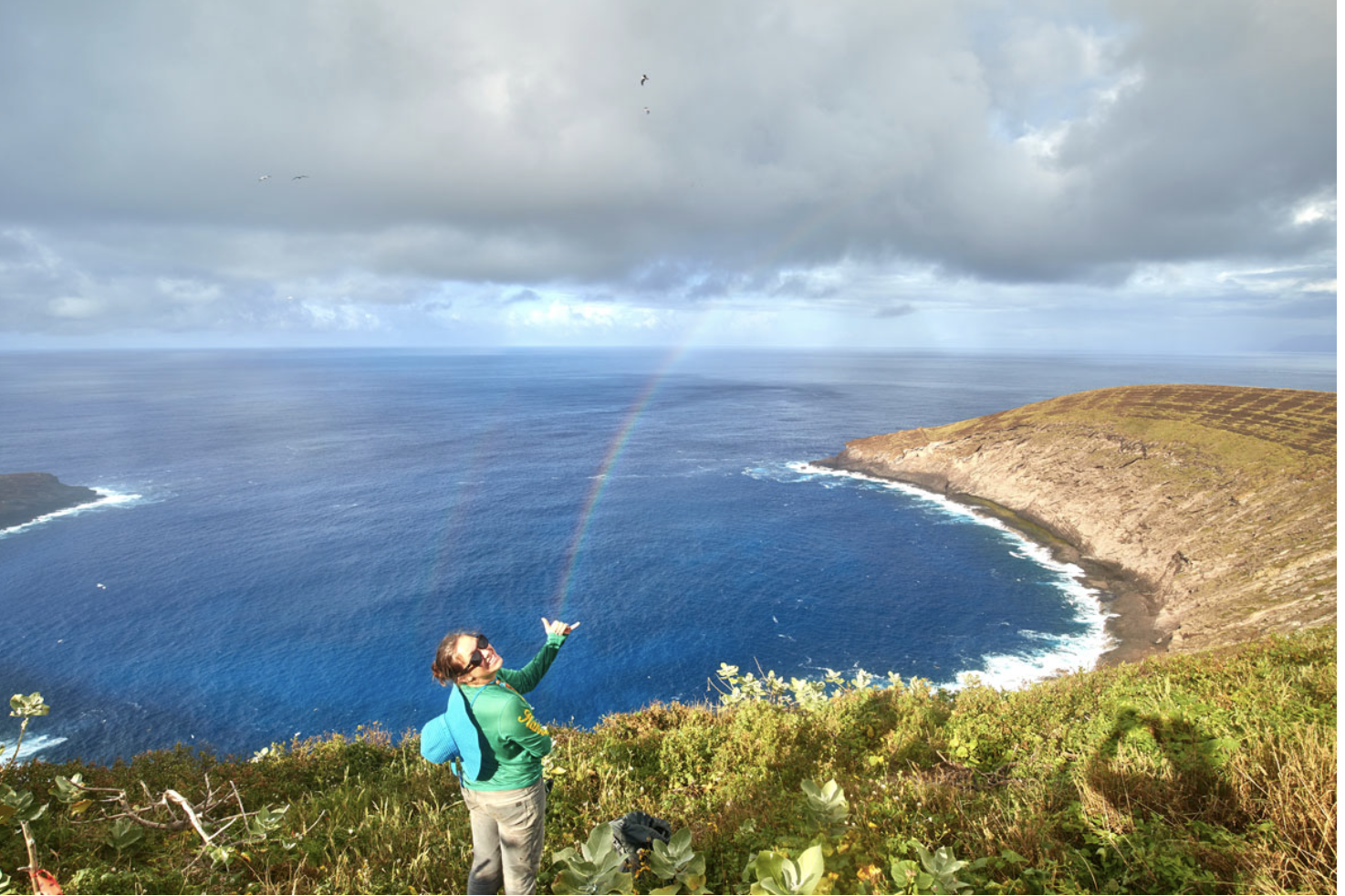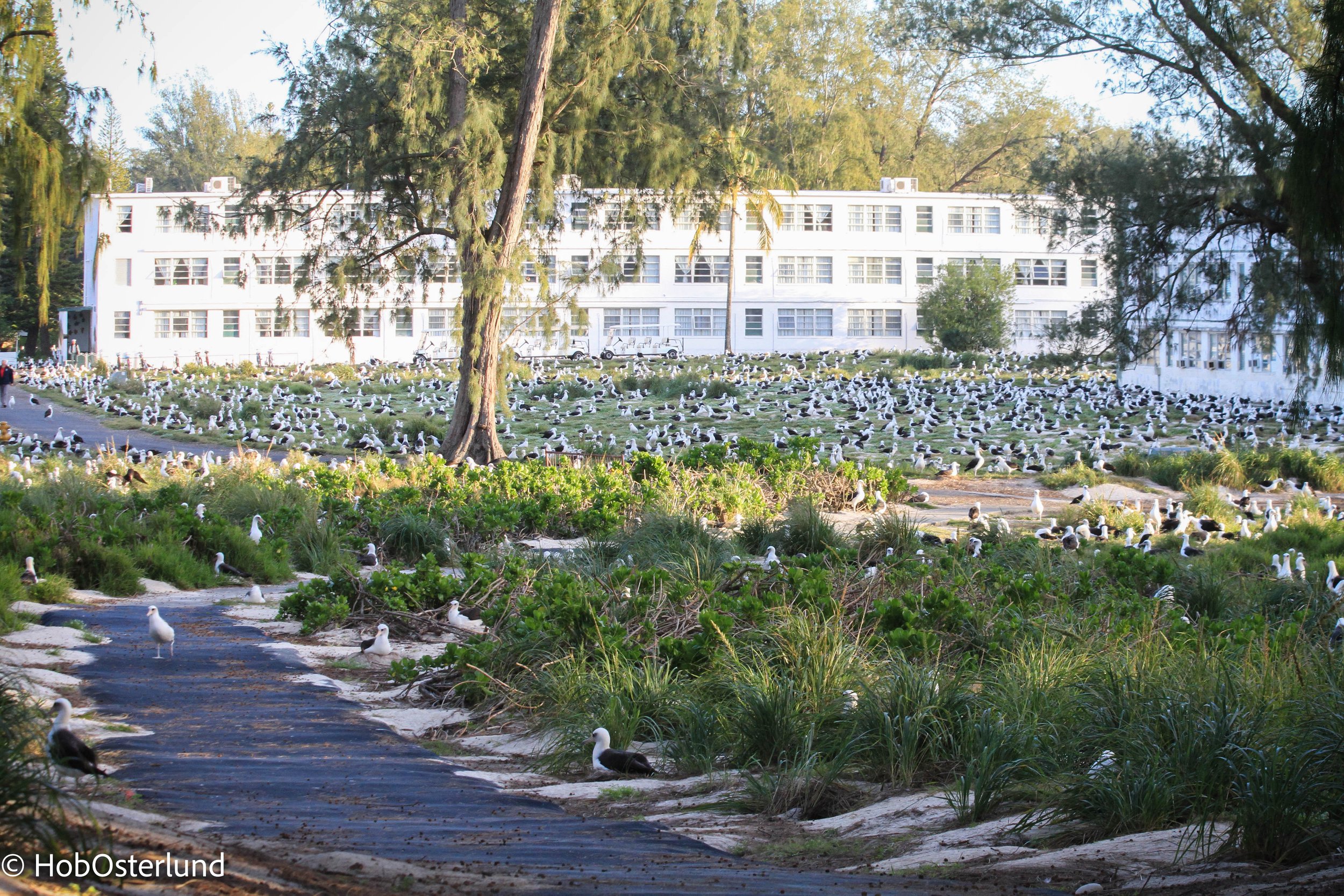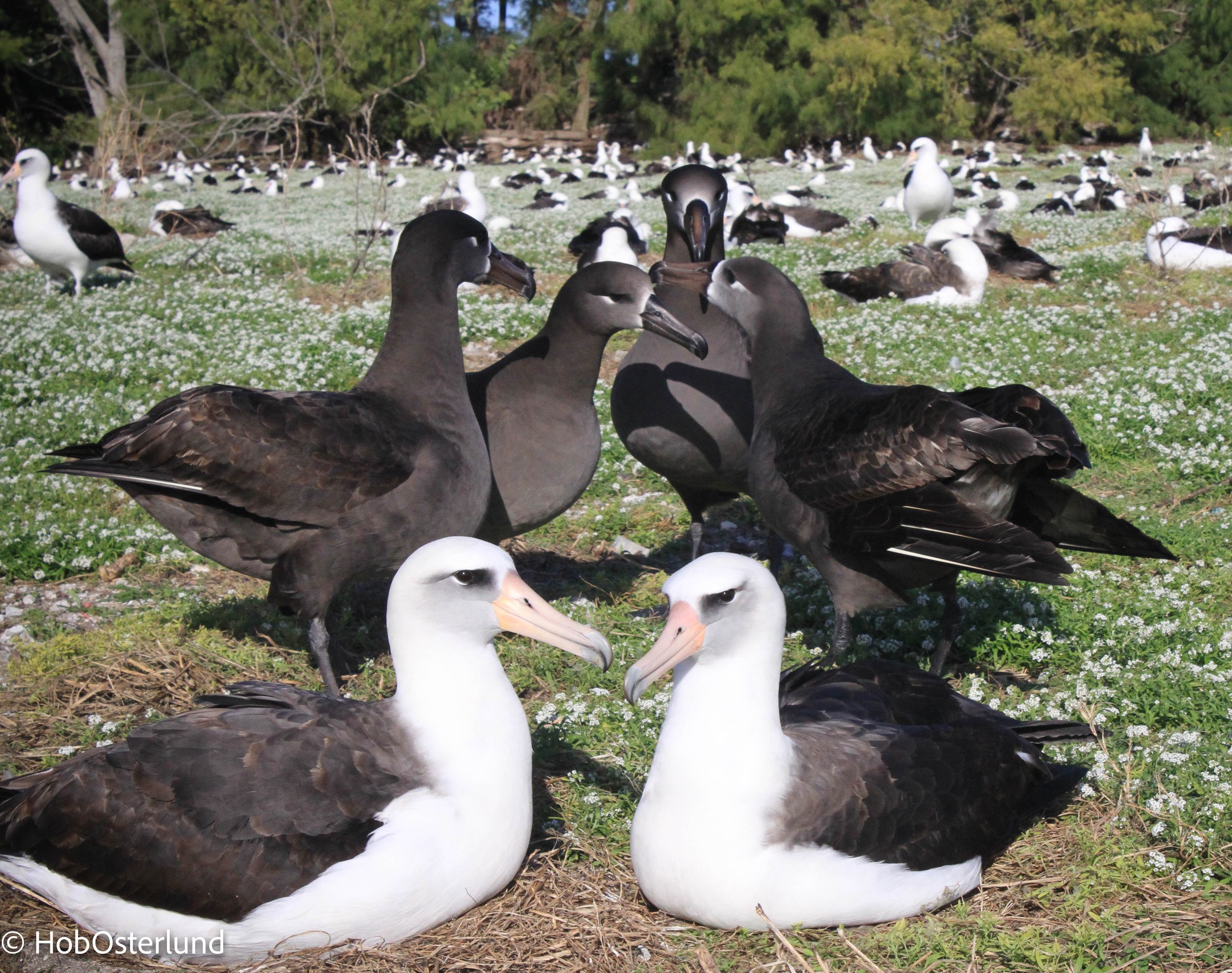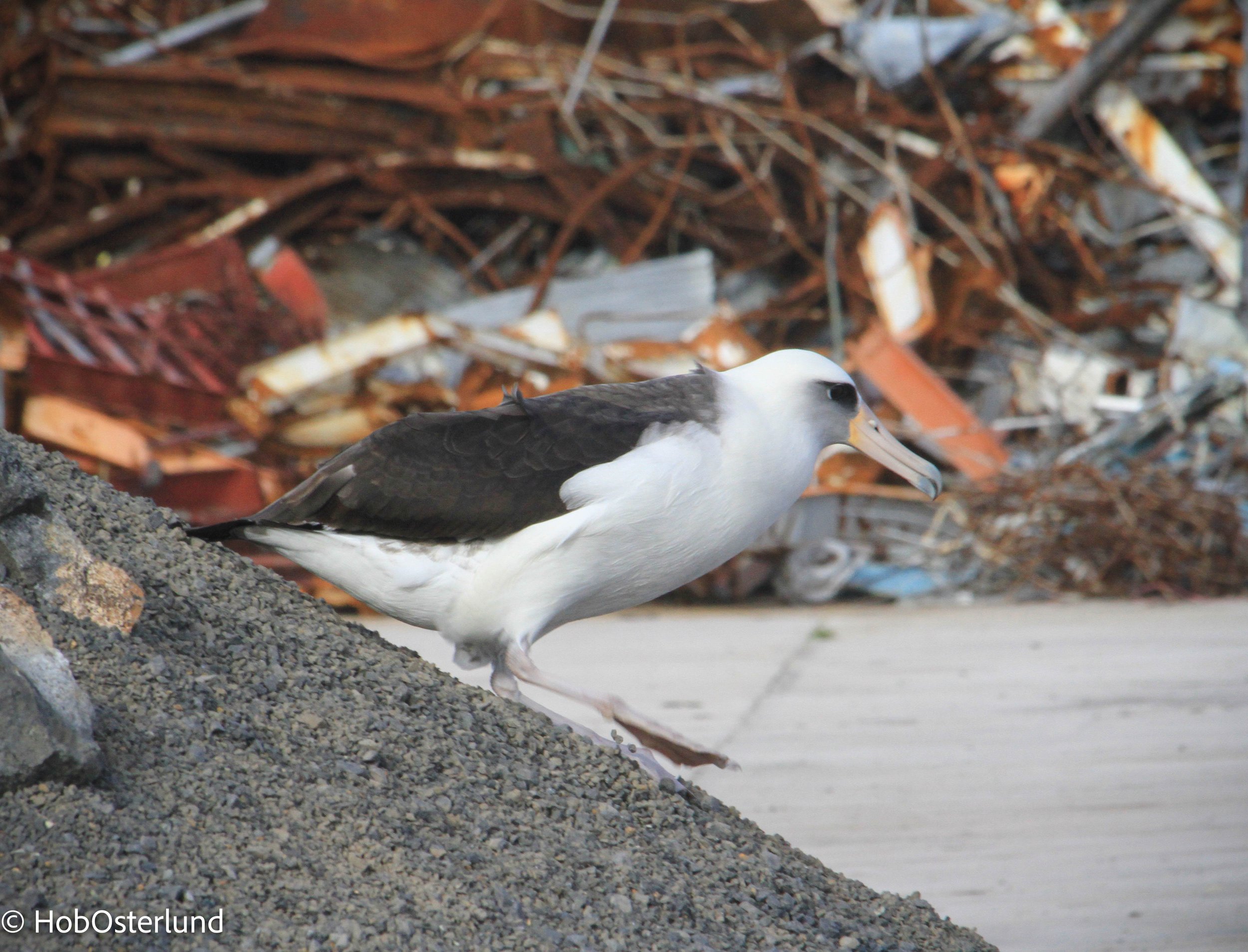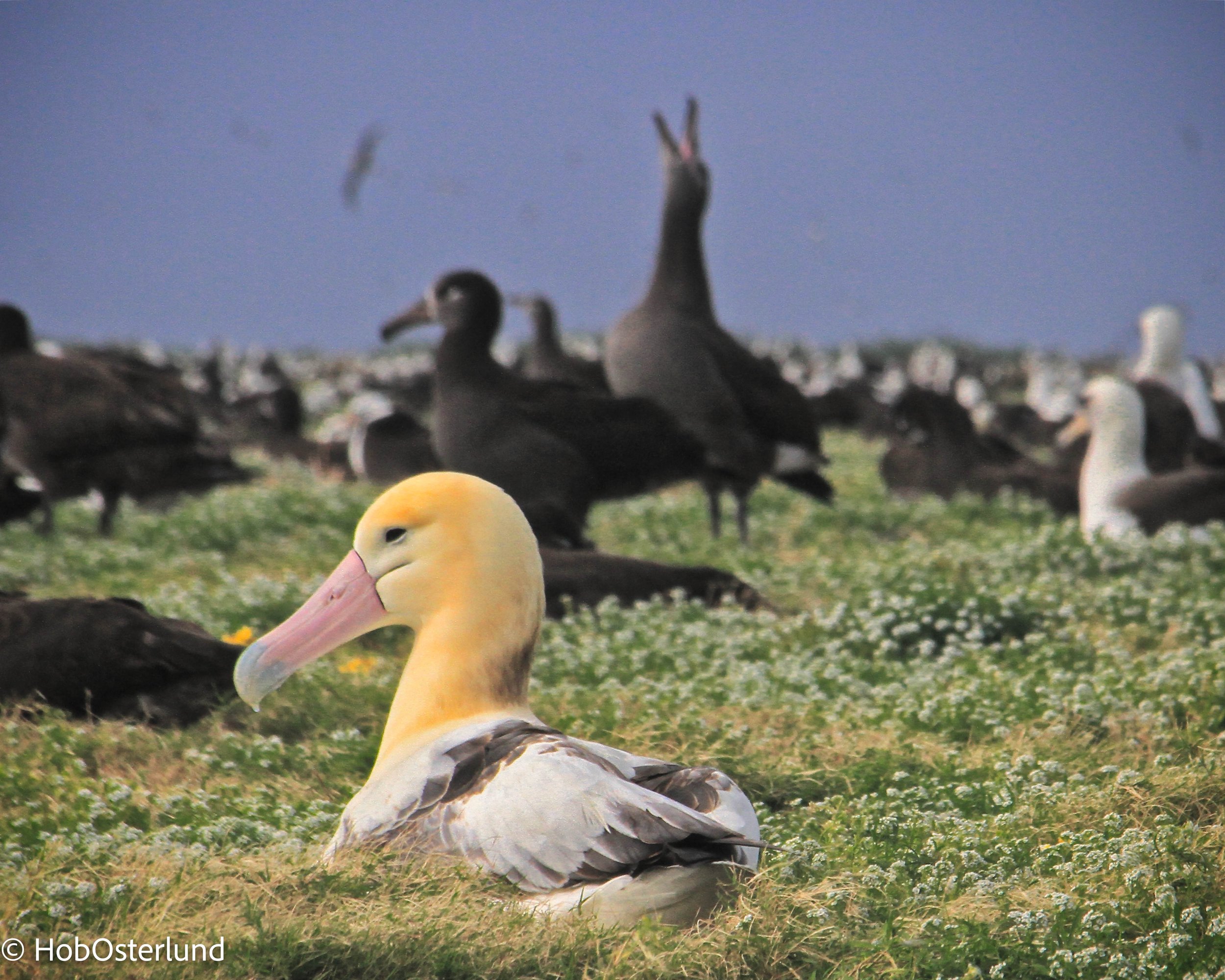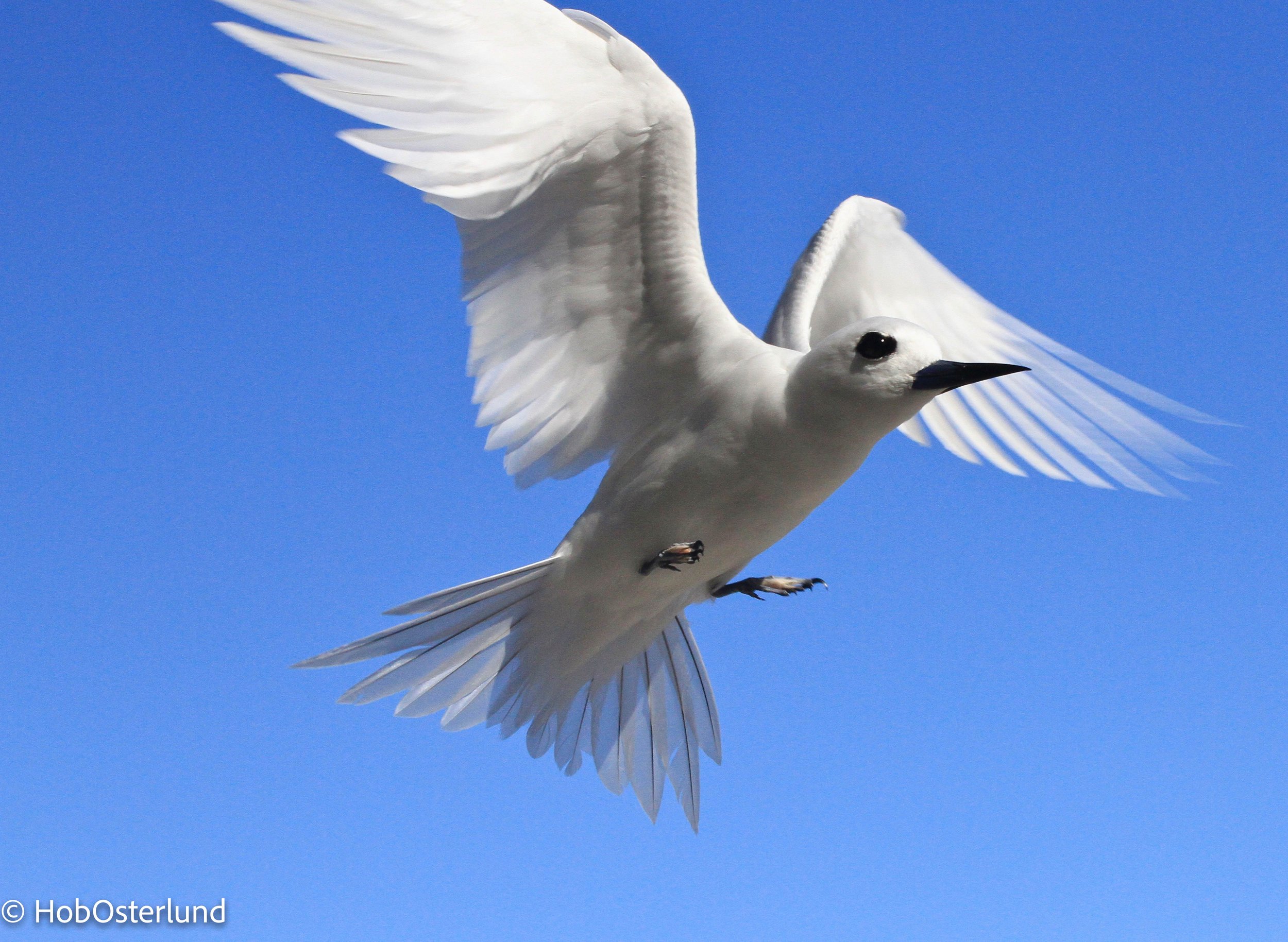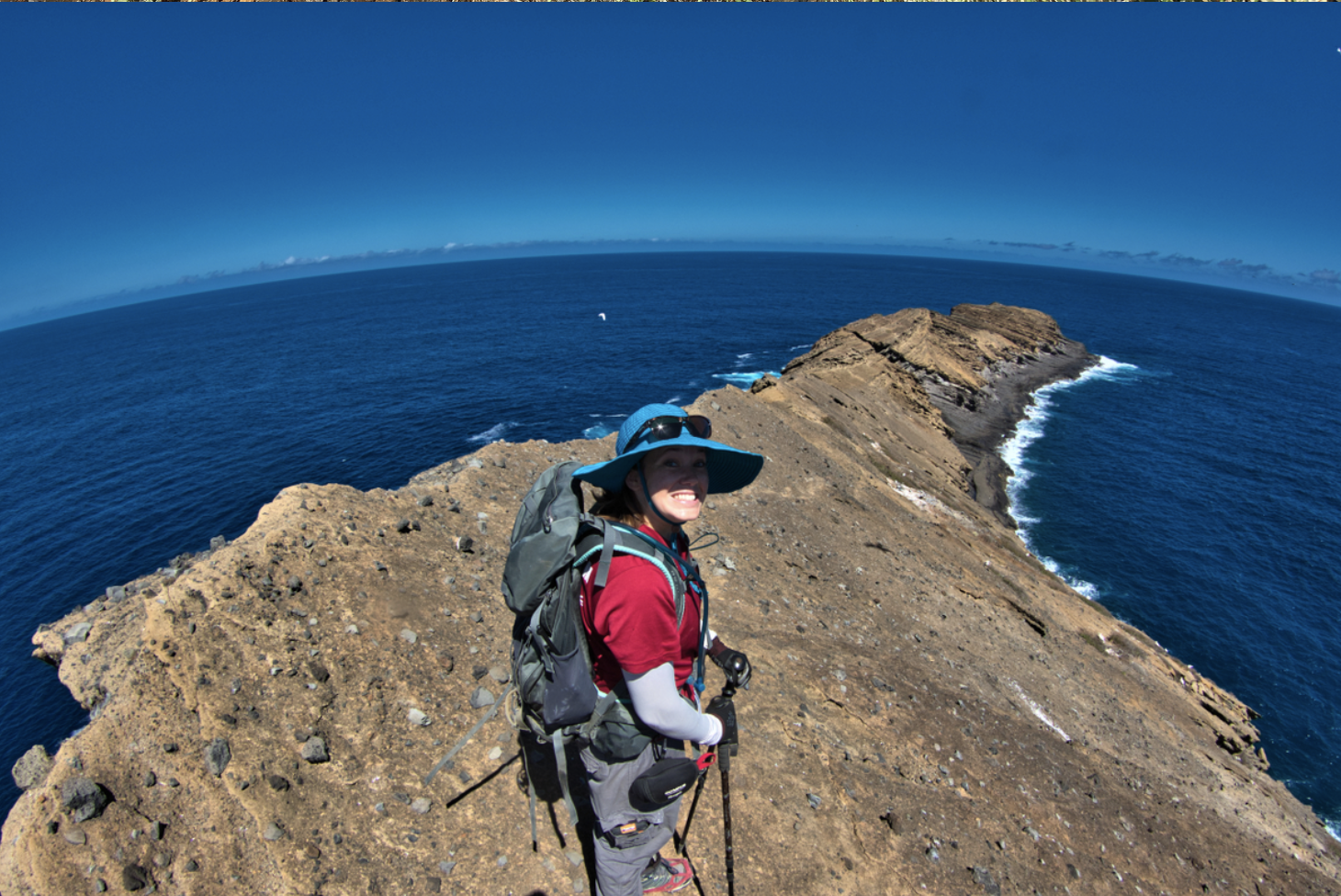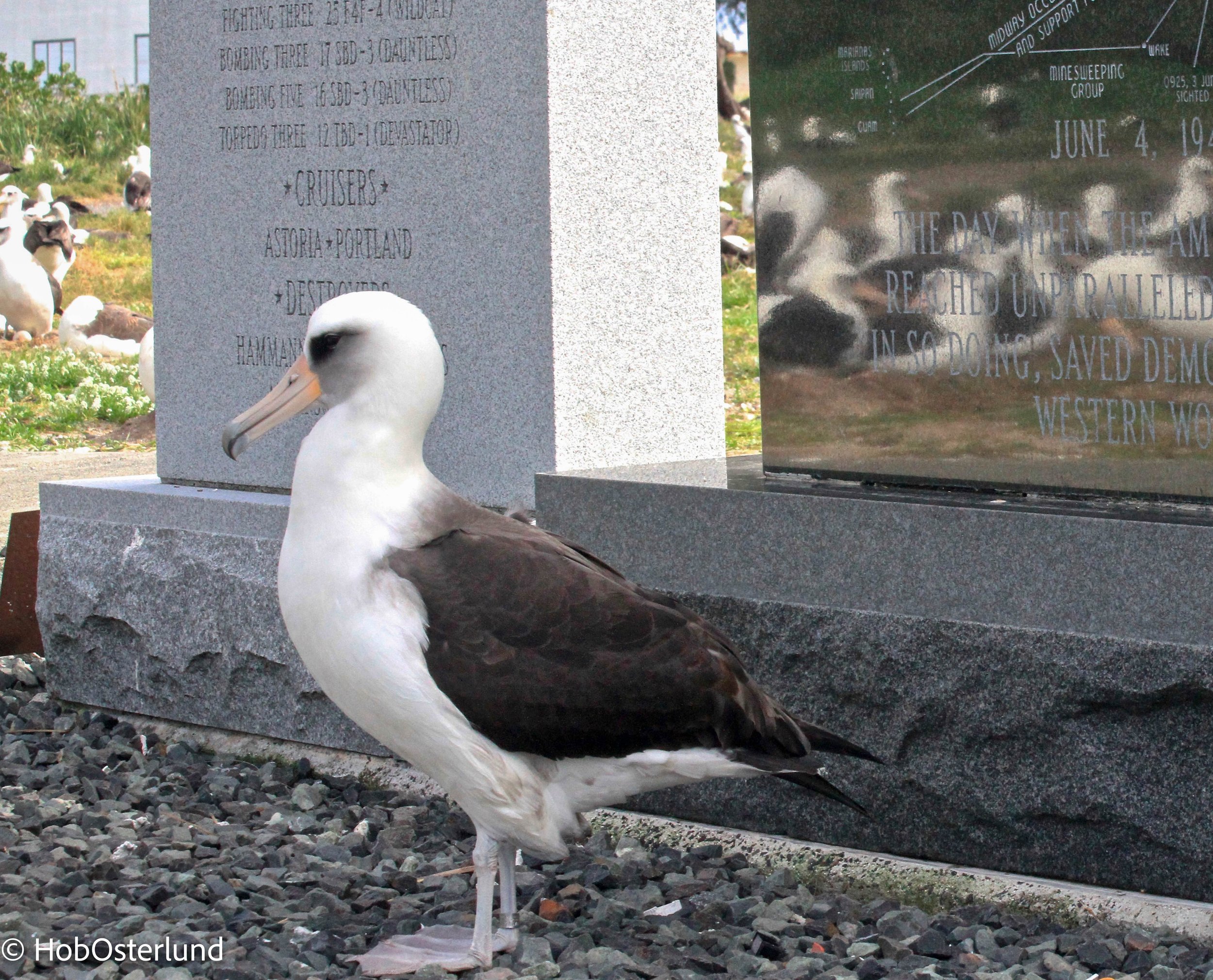Of Mice and Mōlī: Protecting Seabirds on Midway Atoll
By Hob Osterlund, Safina Center Senior Fellow
Mele Khalsa, Island Conservation’s Island Restoration Specialist, on Lehua Islet, Hawaii. Photo by Tom Green
Midway Atoll, about 1200 miles northwest of Honolulu, is home to some three million seabirds. Its three islands are the undisputed Mother Ship of Laysan and Black-footed albatross. Every year, when hundreds of thousands of albatross are sitting on eggs the length of soda cans, Sand Island—the largest among the three—is virtually bumper-to-bumper birds.
Millions of seabirds call Midway home. Photo by Hob Osterlund
Laysan and Black-footed albatross nest on Midway Atoll. Photo by Hob Osterlund
During incubation, Laysan albatross (Mōlī in Hawaiian) are a vision of contentment. They sit quietly, eyes closed and heads high, as if in a trance state. This despite their being surrounded by non-nesting mōlī, themselves in a frequent frenzy of courting, dancing, whinnying, mooing and beefing. The parents look so much like theyʻre in meditation you can almost hear an OM vibrating from within the cacophony.
Albatross face several pelagic threats, but on Midway they have long been safe from predators. That is, they used to be. In 2015, human volunteers came upon a previously unseen calamity. They saw nesting adults with blood dripping from their heads and necks, as if theyʻd been bitten or attacked. They found bloodied mōlī dead on their nests. At first no one knew what was causing the gore, but when the team set up night-vision cameras, the culprits were revealed: it was mice. Non-native rodents had been crawling onto the backs of the birds and literally nibbling them to death. Initially the attacks were confined to a small area of one atoll, but within two years they had spread all over Sand Island. More than a thousand albatross had lost their lives. (Graphic photos here.)
No question about it: the mice had to go.
Because of remnants of a military base on Midway, there are countless places for mice to hide. Photo by Hob Osterlund
Ridding an island of countless tiny rodents with innumerable places to hide would be no small task. The US Fish and Wildlife Service, responsible for protecting the birds, consulted with several agencies including Island Conservation, a non-profit entity with years of experience accomplishing just this feat on over sixty-five islands.
I spoke with Mele Khalsa, Island Conservation’s Island Restoration Specialist, about the plan.
HO: Aloha, Mele. First let me say congratulations on your success in extirpating rats from Lehua Islet off the west side of Kauaʻi. Itʻs wonderful seabird nesting is rebounding there. Will you be using a similar strategy at Midway?
MK: Aloha, Hob. We are very happy that the birds of Lehua are now free from the threat of rats which were eating eggs and chicks and massively suppressing the populations of some of our most vulnerable Hawaiian seabirds. The seabirds are rebounding well after rat removal and those findings can be found in a recently published technical report: “Update on the status of the avifauna of Lehua Islet.”
Island Conservation removes invasive species from islands using scientifically proven strategies and principles. Midway will benefit from the many successful eradications which have come before it. We will be using a strategy which has proven successful on over seven hundred islands world-wide to remove invasive rats and mice, including Lehua Islet.
HO: Will all the albatross will be gone to sea when the mouse eradication happens? Are there other birds to be concerned about?
MK: Almost all the albatross will be gone when the eradication begins. The chicks begin to fledge in June and most are gone by mid-July. During the implementation window, these late-season fledglings will still be present, but the parents are only rarely returning to feed them so the chicks are mostly on their own until they are ready to take flight. The chicks rely on their parents for food and we do not expect them to consume the rodent bait.
Rare and highly endangered Short-tailed albatross now nest at Midway. Photo by Hob Osterlund
There are other bird species that could be put at risk by the project. These risks have been extensively evaluated and appropriate plans are in place to reduce the risks as much as possible. We do not expect any significant negative impacts to any bird species as part of the project; rather, we expect all the native species on Midway to benefit.
White terns nest on Midway. Photo by Hob Osterlund
HO: Many people have heard that rodenticides are very problematic in other parts of the world due to secondary poisoning of predators that eat the target animals. Why are rodenticides safe to use on Midway?
MK: This (secondary poisoning) is particularly problematic when the rodenticides are used over long periods of time, and thus are consistently available in the environment. Rodenticides are an important tool for island eradications, and we work very hard to understand and manage the risks. On Midway, we plan to complete all baiting in a relatively short period of time, which limits the duration of risk and makes it more manageable. The bait breaks down and becomes deactivated in the environment over time, so the risks are temporary. The benefits are permanent.
As you mention, non-target animals can consume or scavenge the carcasses of dead rodents. This is less of a concern on Midway since there are not any resident predator or scavenger specialist species. Similar strategies have been used successfully to remove invasive rodents from over seven hundred islands, protecting some of the world’s most vulnerable and special species.
HO: Midway is such a safe haven for so many species. Are there risks to the monk seals, green sea turtles or coral reefs?
MK: We don’t expect any negative impacts to monk seals, green sea turtles, or coral reefs. Our assessments found that the greatest risk to seals and turtles would be through disturbance during the operations, and we have plans to reduce this and will have species experts on hand to monitor for disturbance so we can adjust strategies as needed.
In reality, all of these species stand to benefit from rodent removal. There is research from Palmyra Atoll and the Chagos Archipelago showing that islands with robust seabird colonies and without invasive rodents are surrounded by healthier coral reef ecosystems with greater fish biomass and more resilience to ocean warming events.
Nesting albatross and napping green sea turtles. Photo by Hob Osterlund
HO: Will the intervention have to be repeated every year?
MK: The wonderful thing about an island eradication is that once it is completed it will never have to be done again, as long as good biosecurity is maintained and rodents are not reintroduced. The long-term gains for biodiversity are significant and will continue to grow for years after the eradication is complete. It really is a permanent solution to a pervasive problem, and it can only be done on islands such as Midway. The project was originally planned to occur in 2020 but due to the pandemic it was rescheduled for 2022.
HO: When the rat eradication was planned for Lehua, there was an outcry from people who mischaracterized the project as “poisoning paradise.” Whatʻs your strategy for addressing this issue prior to the actual intervention?
Mele Khalsa, on Lehua Islet, Hawaii. Photo by Tom Green
MK: That response to the Lehua project was really unfortunate, especially considering that the fears were unfounded and the benefits of rat removal have been realized. A lot of the concern around Lehua was related to its proximity to the densely populated Kauai Island and its popularity with snorkel and diving tour operators. We haven’t seen a similar response to the Midway eradication because these factors are not in place at Midway.
The compliance process considered feedback from public comment to improve our strategies, and we’ve been working closely with staff stationed on Midway to address their concerns and ensure they are enthusiastic partners in the project’s success. Midway has been established as an important conservation area for many years, and this important action is just another step in securing Midway’s importance for millions of breeding seabirds.
Midway is the site of an infamous WWII battle. Photo by Hob Osterlund
HO: How can the public help?
Please show your support by donating to the Albatross Protection Fund through www.islandconservation.org and by spreading the word that island eradications are a safe, effective and impactful way to protect biodiversity and reverse human impacts on the few remaining pristine wild places. Islands comprise only 5.3% of the Earth’s land area and represent the greatest concentration of both biodiversity and extinctions. Invasive species are implicated in 86% of recorded extinctions on islands, and eradicating invasives is a proven tool to prevent extinctions.

